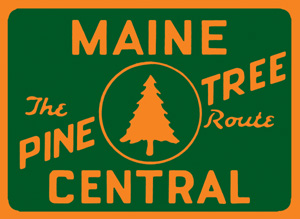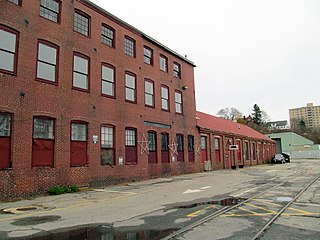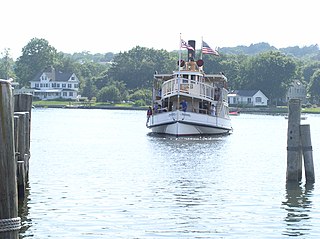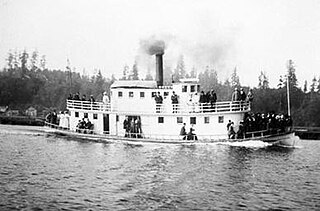
The Kennebec Boat and Canoe Company was located in Waterville, Maine. Established in 1909 by George F. Terry, the company manufactured wooden canoes and boats until 1941. [1]

The Kennebec Boat and Canoe Company was located in Waterville, Maine. Established in 1909 by George F. Terry, the company manufactured wooden canoes and boats until 1941. [1]

The Kennebec Boat and canoe Company was founded by former railroad station agent, ice cutter, publisher and merchandiser George F. Terry. Walter D. Grant supervised the building of canoes for Terry, who had no personal experience building canoes. Grant had previously worked for the B.N. Morris Canoe Company of Veazie, Maine. Grant's brother worked for the E.M. White Canoe Company and his sister was married to White. In 1930, Grant left Kennebec to found the Skowhegan Boat and Canoe Company whose canoes closely resemble those of Kennebec. [2]
Walter Grant's prior connection to Morris suggests a reason for similarities between the canoes of Kennebec and B.N. Morris. The Morris is known for having stems made of cedar, rather than hardwood. The cedar stem widens to three inches at its end and is diagnostic of the canoes built by B.N. Morris. Some Kennebec canoes share this feature as well, yet their profiles are that of the majority of Kennebec canoes, which have a narrow, hardwood stem. Terry hired men who had learned the trade from Morris, as well as those who had worked elsewhere, and apparently gave the men free rein when it came to building canoes as it was not his field of expertise. [3]
Terry’s son, George F. Terry, Jr., later joined the company and ran it until 1939. In 1939, the company was sold to Frank Terry and James Dean, who built a small number of canoes before closing in 1941. [4]

Kennebec canoes are known for their heart shaped decks and short rail caps, a trim commonly used on their open gunwale canoes.
Serial numbers consist of four to six digits followed by the length of the canoe, and are stamped on the upper face of the stem on the floor of the canoe or on a brass builder's plate. Records linking a serial number to original build-information may be accessed through the Wooden Canoe Heritage Association. [5]


A kayak is a small, narrow watercraft which is typically propelled by means of a double-bladed paddle. The word kayak originates from the Greenlandic word qajaq.

A canoe is a lightweight narrow vessel, typically pointed at both ends and open on top, propelled by one or more seated or kneeling paddlers facing the direction of travel and using a single-bladed paddle.

The Kennebec River is a 170-mile-long (270 km) river within the U.S. state of Maine.

USS Terry (DD-25) was a modified Paulding-class destroyer in the United States Navy during World War I, and later in the United States Coast Guard, designated CG-19. She was the first ship named for Edward A. Terry, and the first ship commanded by future Fleet Admiral and Chief of Naval Operations Ernest J. King.

The Maine Central Railroad Company was a former U. S. Class I railroad in central and southern Maine. It was chartered in 1856 and began operations in 1862. By 1884, Maine Central was the longest railroad in New England. Maine Central had expanded to 1,358 miles (2,185 km) when the United States Railroad Administration assumed control in 1917. The main line extended from South Portland, Maine, east to the Canada–United States border with New Brunswick, and a Mountain Division extended west from Portland to Vermont and north into Quebec. The main line was double track from South Portland to Royal Junction, where it split into a "lower road" through Brunswick and Augusta and a "back road" through Lewiston which converged at Waterville into single track to Bangor and points east. Branch lines served the industrial center of Rumford, a resort hotel on Moosehead Lake, and coastal communities from Bath to Eastport.
A Grumman Sportboat, is a 15' 4" long, 43" wide square stern canoe manufactured in America. It, as well as the Coleman Scanoe, are patterned after "Grand Lakers," wooden fishing guide boats built on Grand Lake, Maine for oar power, subsequently modified for the advent of small outboard engines with the addition of more bearing aft and a flat tumblehome transom.

The Portland Company was established 10 November 1846 by John A. Poor and Norris Locomotive Works engineer Septimus Norris as a locomotive foundry to build railroad equipment for the adjacent Portland terminus of the Atlantic and St. Lawrence Railroad connection between Portland, Maine and Montreal. The shops opened for business in October, 1847. Its first locomotive, the Augusta, emerged from the shops in July 1848 for delivery to the Portland, Saco & Portsmouth. Over the next several decades, the Company produced in its Fore Street facilities over 600 steam locomotives as well as 160 merchant and naval vessels, railcars, construction equipment, Knox automobiles, and the like. Portland Company built the engines of the civil war side-wheel gunboats Agawam and Pontoosuc. Taking into account its other products, the Company could lay claim to being one of the leading medium-to-heavy steel manufacturers in New England. The company ceased production in 1978.

Wheeler Vivian Oakman was an American film actor.

Bryant Washburn was an American film actor who appeared in 375 films between 1911 and 1947. Washburn's parents were Franklin Bryant Washburn II and Metha Catherine Johnson Washburn. He attended Lake View High School in Chicago.

Sabino is a small wooden, coal-fired steamboat built in 1908 and located at the Mystic Seaport Museum in Mystic, Connecticut. It is one of only two surviving members of the American mosquito fleet, and it was declared a National Historic Landmark in 1992.

The Pine Creek Rail Trail is a rail trail in the Appalachian Mountains of north-central Pennsylvania.
The Commandant of Midshipmen is the second-in-command at the United States Naval Academy. According to the Naval Academy, the Commandant of Midshipmen is "responsible for the professional development and day-to-day activities of all 4,500 Midshipmen in the Brigade" and equates to a dean of students at a civilian university. The Commandant reports to the Superintendent. The Commandant is assisted by a Deputy Commandant. Modern Commandants typically hold the Navy rank of captain, but since 2002, two of the Commandants have been a United States Marine Corps colonel. The current Commandant is Captain Thomas "PR" Buchanan, USN. He is the 88th Commandant.

Old Town Canoe Company is a historic maker of canoes in Old Town, Maine. The company had its beginnings in 1898, in buildings constructed in 1890 for a shoe business, and was incorporated in 1901. Old Town entered the canoe market as a builder of canvas-covered wooden canoes. In the latter half of the 20th century, the company adopted more modern materials to maintain competitiveness. The company's plant was located along the Penobscot River.
The E.M. White Canoe Company was founded by Edwin White, who produced wood and canvas canoes from 1889 into the 1940s. White is considered one of the pioneers of wood and canvas canoe building and one of several prominent canoe builders in Maine.

The Peterborough Canoe Company, founded in 1892 by William H. Hill and Elihu Edwards, manufactured wooden canoes in a factory located at the corner of King and Water Streets in the city of Peterborough, Ontario, Canada, where quality wood and wood-canvas canoes and sporting goods were produced until 1961.

The B.N. Morris Canoe Company of Veazie, Maine, produced wood and canvas canoes from 1891 until fire destroyed the factory late in 1919. The shapeliness, style, and workmanship of the Morris canoes and boats made some of the most picturesque craft that were ever built with this construction form.

Favorite was a small steamboat that was operated on the Coquille River, Coos Bay and on the Siuslaw River, in the southern Oregon coast region from 1900 to 1918.

E.H. Gerrish (1847-1930) is credited with being the first person to sell wood-canvas canoes commercially. From 1882-1909, Gerrish built and sold canoes from a shop in Bangor, Maine. Early Gerrish canoes contain elements of the birchbark canoes upon which they were based. If studied from earliest-to-latest, the canoes of E.H. Gerrish appear to show the morphing of the wood-canvas from its roots in the birch bark to the modern open gunwale canoe.

The Carleton Canoe Company of Old Town, Maine was one of the earliest producers of wood and canvas canoes. From the 1870s, Guy Carleton sold bateaux and birch bark canoes commercially and added a canvas-covered canoe to his product line in the 1880s. Carleton was acquired by Old Town Canoe in 1910, and continued to be offered as a separate entity until the 1940s.
Charles Edward Terry was an American murderer and suspected serial killer. Convicted of the 1963 strangling of Zenovia Clegg, and a suspect in two murders in his native Maine, it is also suggested that Terry could've been responsible for even more killings, including several attributed to the Boston Strangler. He died in prison in 1981, from pulmonary embolism, after suffering from lung cancer.